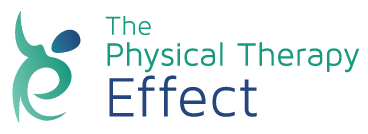How to Treat Lower Back Pain
Sep 19, 2022

Lower back pain is extremely common amongst Americans of all ages and sizes. While there are many things you can do to help prevent back pain, it’s also important to know how to treat it when it does occur. We will discuss treatments you can do at home in addition to how a doctor or physical therapist can help you.
How to Treat Lower Back Pain at Home
If you are just starting to experience lower back pain or have only mild to moderate pain, you can try to begin treating it at home. Here are some common methods.

Method #1
Exercise
It might seem counterintuitive at first, but if you have lower back pain, it’s vital to keep moving. If you don’t move your body, you can continually get weaker, especially in your core. Try to exercise for thirty minutes a day at least three times a week, if not more. If you are not used to exercising, start with something light like taking a walk.
Method #2
Perform Stretches for Back Pain
There are many stretches that you can do at home to help alleviate lower back pain. Many yoga instructors’ YouTube channels can provide you with entire routines for lower back pain. Or, you can try stretches one at a time. Here are a few stretches to try:
Knee-to-chest Stretch
Lie on your back with your knees bent and your feet flat on the floor. Alternate bringing one leg at a time to your chest with both of your hands. Your spine should be flat against the floor. Then, repeat with both of your legs at the same time.
Torso Twist
Lie as you did in the last stretch, with your knees bent and your feet flat on the floor. Drop your bent knees over to one side, while keeping your shoulders firmly on the floor. Repeat on the other side.
Cat/Cow Stretch
Start in a tabletop position with your shins on the floor and your hands directly underneath your shoulders. Arch your back upward, as if you’re trying to get your belly button to touch the ceiling, and look down at the floor. This is the “cat” position. Then, drop your abdomen and lower back to the ground and look up at the ceiling. This is the “cow” position. Repeat.
Method #3
Change up Your Sleep

The way you sleep can impact your back dramatically. One recommended position for back pain is to sleep on your side with your knees bent slightly towards yourself. This can help reduce pressure on your lower back. If you’re a back sleeper, try to place pillows to better support yourself, such as beneath your lower back and your knees.
Method #4
Use Over-the-Counter Medications

You can use OTC medications to treat mild to moderate back pain. However, if you come to rely on them to get through your day or the pain doesn’t go away, be sure to contact your doctor.
Method #5
Apply Ice and Heat

Relief from ice and heat can be great for lower back pain. Taking a hot bath can help relax your lower back, or you can apply direct heat with a hot compress, towel, or heating pad. Using heat can improve your blood flow and keep muscles healthy. On the other hand, using ice or cold compresses can help reduce inflammation, which is especially important after exercise or high amounts of activity. Be sure to use a towel or sheet to protect your skin from direct contact with extremely cold objects.
Method #6
Look for Causes in Your Daily Routine
There may be culprits in your daily life that you haven’t considered before that are contributing to your back pain. These include:
- Looking down at a computer for several hours
- Large amount of smartphone usage
- Carrying a heavy backpack
- Wearing uncomfortable shoes
- Routinely lifting heavy objects
Consider lifting your computer up on a pedestal to keep it level with your eyesight so you’re not hunkering down over your desk. If you need to carry a backpack for work or school, try to lighten your load or get a more supportive bag. Be sure to wear shoes that support your entire foot and leg.
When to See a Doctor for Lower Back Pain
If your lower back pain is severe, debilitating, or chronic, you should contact your doctor. There might be an underlying cause for your back pain. There are many different routes that your doctor might recommend to address your back pain. These include:

Physical Therapy
Your doctor may recommend physical therapy to help strengthen your core and back muscles to prevent future back pain. In physical therapy, you will work with a doctor of physical therapy on a range of exercises and movements.
Prescription Medications
Your doctor might prescribe specific medications to help manage your pain, often in combination with physical therapy.
Surgery or Other Interventions
If your back pain is severe or there is a larger underlying problem, you may need a serious intervention such as surgery. However, this is not the most common outcome and most people with back pain will never need surgery.
Alternative Methods

Doctors may also recommend more alternative methods such as acupuncture or massage to address your back pain. Stress can also be a large factor in lower back pain, so seeing a talk therapist may help alleviate some of the pain in your back over time.
For informational purposes only.











